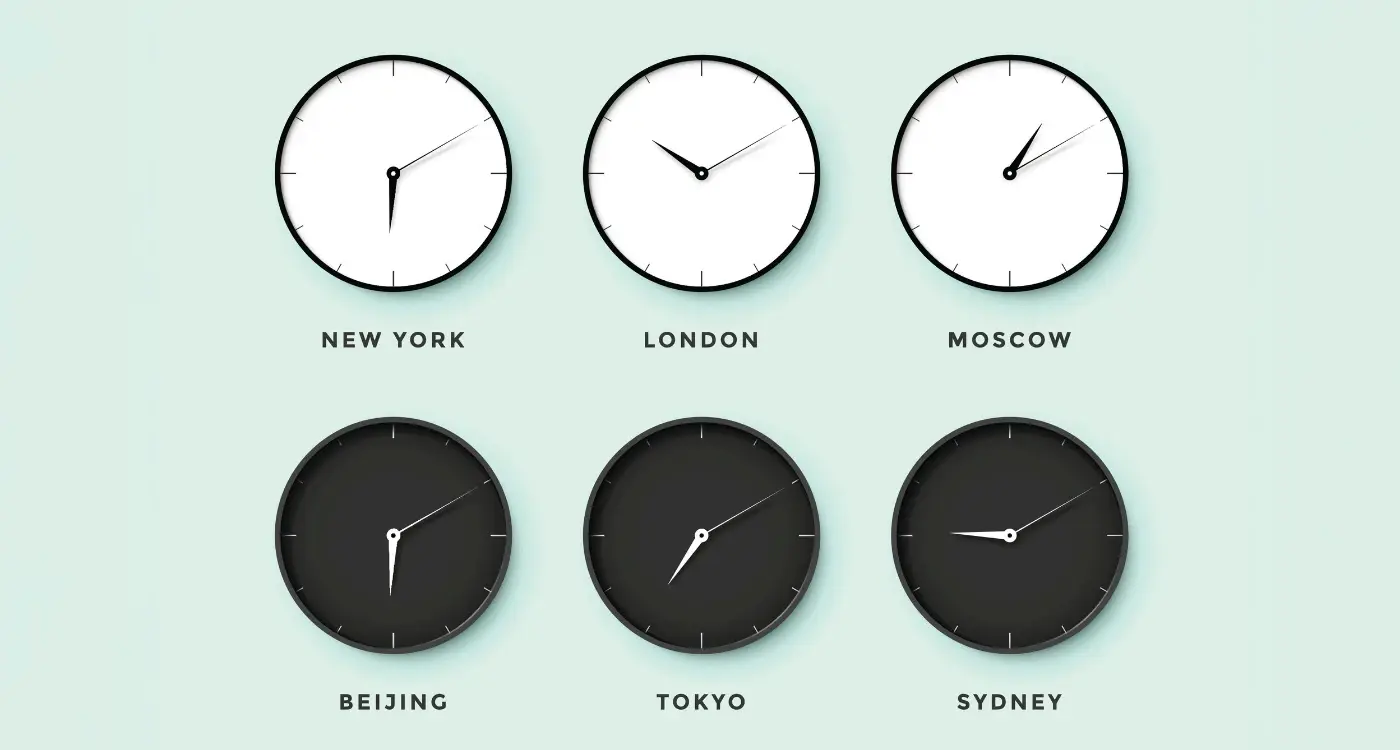What Developer Team Size Works Best for Your App Project?
Getting your developer team size right is one of those decisions that can make or break your app project—and honestly, its something I see clients struggle with all the time. Too small a team and you'll watch deadlines slip away month after month; too large and you're burning through budget while people step on each others toes trying to coordinate work. I mean, there's no magic number that works for every project, which is exactly why so many people get this wrong from the start.
When someone comes to me with an app idea, they usually have a budget in mind and a rough timeline. Fair enough. But what they often haven't considered is how the size and structure of their development team will directly impact both of those things—and the quality of what gets built. A three-person team will approach your project completely differently than a ten-person team, and neither is inherently better or worse. It all depends on what you're actually building and what your constraints are.
The right team size isn't about finding the biggest or smallest option; it's about matching your resources to your projects actual needs and complexity level.
Over the years I've built apps with teams ranging from just two developers working part-time, to coordinating groups of 15+ people across design, development, testing and project management. Each size comes with its own advantages and challenges. Small teams move fast and communicate easily but can get overwhelmed by complex requirements. Large teams can tackle massive projects but need careful coordination to avoid becoming inefficient. The trick is understanding which team composition fits your specific situation—and that's exactly what we're going to explore in this guide.
Understanding Team Sizes in Mobile Development
Right, so here's the thing—when people ask me how many developers they need for their app project, they're expecting a simple answer. Like "you need 5 people" or something like that. But its honestly a bit more complicated than that, and it depends on what you're actually trying to build.
Mobile app teams can range anywhere from just 2-3 people working on something simple, all the way up to 20+ people for massive enterprise apps. And I mean, there's no magic number that works for everyone—what matters is matching the team size to your specific needs, timeline and budget. Over the years I've seen projects fail not because the team was too small or too large, but because the team size didn't match what the project actually needed.
The smallest viable team for a basic app typically includes a designer, a developer, and someone managing the project. That's your bare minimum really. You can't really go much smaller than that unless you've got one of those rare unicorns who can design, code and manage everything themselves (they do exist, but they're not common). For something more complex? You might need separate iOS and Android developers, a backend developer, a UI/UX designer, a QA tester, and a project manager—that's already 6 people right there.
Here's what different team sizes usually look like in practice:
- Small teams (2-4 people) work best for MVPs, simple utility apps, or projects with tight budgets
- Medium teams (5-10 people) handle most commercial apps with moderate complexity and feature sets
- Large teams (11-20+ people) tackle enterprise applications, apps with heavy backend requirements, or projects needing rapid development
What most people don't realise is that bigger doesn't always mean faster. Sometimes a small, focused team can move quicker than a large one because there's less coordination overhead and fewer communication bottlenecks. But then again, a small team cant handle the workload of a truly complex app—you'll just burn everyone out.
Matching Team Size to Your Budget and Timeline
Right, lets talk about money and time—because honestly, these two factors will shape your team size more than anything else. I mean, you could have the most ambitious app idea in the world, but if you've got a tight budget and need it done quickly, you're going to need to be realistic about what's possible.
Here's the thing about budgets: bigger teams cost more money. Seems obvious, right? But what people don't always realise is that the relationship isn't linear—doubling your team size doesn't just double your costs, it can actually increase them by even more once you factor in management overhead, communication tools, and the extra time spent coordinating everyone. I've seen projects where clients assumed throwing more developers at the problem would speed things up, only to find their budget eaten up by all the extra coordination needed.
Your timeline matters just as much. A small team of two or three developers might build your app for less money, but it'll take longer; a larger team can work on multiple features simultaneously, which shortens the timeline but increases costs. You need to find that sweet spot where your budget and deadline actually align with what's technically possible.
Budget and Team Size Guidelines
| Budget Range | Typical Team Size | Timeline Expectation |
|---|---|---|
| £15,000 - £30,000 | 1-3 developers | 3-6 months |
| £30,000 - £75,000 | 3-6 developers | 4-8 months |
| £75,000 - £150,000 | 6-10 developers | 6-12 months |
| £150,000+ | 10+ developers | 8-18 months |
Something to keep in mind: rushing a project by overstaffing rarely works as well as you'd hope. There's a point where adding more people actually slows things down because everyone's spending more time in meetings than writing code. Its a balancing act really, and being honest about your constraints from the start helps us plan properly.
Before finalising your team size, build in a 15-20% buffer in both budget and timeline—apps always take longer and cost more than initial estimates, and that buffer will save you from difficult decisions later.
Small Teams for Simple Apps
When I talk about small teams, I'm usually referring to 2-4 people working together to build your app. And honestly? For a lot of projects this is exactly what you need—nothing more, nothing less. I've seen clients waste tens of thousands of pounds bringing in massive teams for apps that really just needed a focused group of talented people who could communicate without scheduling three meetings a day.
Small teams work brilliantly for utility apps, simple e-commerce platforms, basic productivity tools, and MVPs where you're testing an idea before going all-in. The kind of apps that do one thing well rather than trying to be everything to everyone. You know what I mean? An app that helps people track their water intake doesn't need the same team size as one that's processing financial transactions for millions of users.
What Makes Up a Small Team
Your typical small team setup includes a project manager (who might also be the client), one or two developers who can handle both iOS and Android using cross-platform tools, and a UI/UX designer who understands mobile conventions. Sometimes the developer and designer roles overlap, which is actually quite common in smaller projects. The key is that everyone wears multiple hats and communication happens naturally because there's only a handful of you.
When Small Teams Make Sense
Here's the thing—small teams aren't just about saving money (though that's definitely a benefit). They're about maintaining focus and moving quickly. Decision-making is faster, there's less bureaucracy, and you can pivot when something isnt working without needing to consult a dozen stakeholders. I've built apps with teams this size that went from concept to App Store in 8-12 weeks, which would be nearly impossible with a larger group.
The projects that suit small teams best include:
- Simple consumer apps with straightforward functionality
- Internal business tools that don't need complex integrations
- MVPs where you're validating your core idea
- Apps with modest user bases (under 50,000 users initially)
- Projects where the backend is relatively simple or already exists
But there are limitations too. Small teams struggle when projects require deep expertise in multiple areas—like if you need real-time video streaming plus complex payment processing plus AI features. Thats when you need to scale up, because asking 3 people to be experts in everything just leads to burnout and compromised quality.
Medium Teams for Complex Projects
Right, so when you're looking at a medium-sized team—we're talking somewhere between 6 to 12 people here—you're now in the territory where you can build something genuinely sophisticated. I mean, this is the sweet spot for most apps that need proper backend infrastructure, multiple user types, or integration with external systems. The jump from a small team isn't just about adding more bodies; its about adding specialist skills that make the difference between a decent app and one that really works properly at scale.
Here's the thing—medium teams let you have dedicated specialists rather than everyone wearing multiple hats. You can afford proper backend developers who understand database architecture and API design. You can bring in a UX designer who focuses solely on user experience rather than just making things look pretty. And honestly? This is where quality assurance becomes a full-time role instead of something developers squeeze in when they remember.
The right team size isn't about having more people—it's about having the right people doing what they do best without spreading themselves too thin across too many responsibilities
A typical medium team setup might include 2-3 mobile developers (one for iOS, one for Android, maybe one working across both), 2 backend developers, a dedicated UI/UX designer, a QA specialist, a project manager, and possibly a DevOps person if your infrastructure needs are demanding. The cost? You're looking at roughly £40,000 to £100,000 depending on timeline and location of your team. But here's what you get for that—faster development than a small team, better code quality because people aren't rushed across multiple disciplines, and crucially, the capacity to handle unexpected challenges without everything grinding to a halt. Projects that need this level of resource include fintech apps with complex transaction handling, healthcare apps with multiple user dashboards and compliance requirements, or e-commerce platforms with inventory management and payment processing. Actually, most apps that go beyond basic CRUD operations (create, read, update, delete) benefit from this team structure.
Large Teams for Enterprise Applications
When you're building an app for a large organisation—we're talking banks, healthcare providers, big retail chains—the complexity jumps up quite dramatically. These projects need teams of 15 to 30 people, sometimes more. Its not just about building an app anymore; you're integrating with legacy systems that were built before smartphones even existed, meeting strict compliance requirements, and coordinating across multiple departments who all have their own ideas about what the app should do.
I mean, the technical challenges alone are pretty intense. You'll typically need separate teams for iOS and Android because the codebase becomes too large for a small cross-platform approach to handle efficiently. Then there's the backend infrastructure—enterprise apps often need to connect to customer databases, inventory systems, payment processors, and sometimes dozens of other internal tools. This requires dedicated backend developers, DevOps engineers to manage the deployment pipeline, and security specialists who focus entirely on protecting user data and meeting regulations like GDPR.
The Reality of Enterprise Development
But here's the thing—large teams come with their own problems. Communication becomes harder when you've got 20 people working on different parts of the same project. You need project managers, scrum masters, and sometimes even product owners just to keep everyone aligned. The development process slows down because changes need to be reviewed by multiple people, tested across various systems, and documented properly for compliance audits.
Actually, one of the biggest challenges isn't technical at all; its getting all the stakeholders to agree on priorities. In my experience, enterprise projects can spend months just in the planning phase because legal needs to review everything, marketing wants certain features, IT has security concerns, and senior management wants it all done yesterday. This is why enterprise apps typically take 9 to 18 months to build—the coordination overhead is massive, even with a large skilled team working full time on the project.
The Core Roles Every App Project Needs
Right, let's talk about the people you actually need to get an app built properly. I've seen projects try to skimp on certain roles and it always—always—comes back to bite them later. Sure, you might save a bit of money upfront, but you'll pay for it in delays, quality issues, or worst case, having to rebuild the whole thing from scratch.
At the bare minimum, every app project needs a developer who can write the code; a designer who understands mobile interfaces (and honestly, not every designer does—web design is a completely different beast); and someone who can manage the project and make decisions. That last one is often the client themselves for smaller projects, which can work fine if they're organised and responsive. But here's the thing—if you're building anything beyond a basic utility app, you'll need more specialised roles. A backend developer to handle your server and database work. A QA tester because developers testing their own code is like marking your own homework, it just doesn't catch everything. Maybe a product manager or strategist who can think through the user journey and business logic.
For more complex builds, you might need specialists like a DevOps engineer to handle deployment and infrastructure, a security expert if you're dealing with sensitive data (fintech, healthcare, anything with payments), or a data analyst if your app relies on understanding user behaviour. The mistake I see most often? People underestimating the design work. They think it's just "making things look nice" but good mobile design is about information architecture, user flows, accessibility, and creating interfaces that feel natural on a touchscreen. It's bloody hard to get right, and when its done poorly, users notice immediately.
Don't try to have one person wear too many hats on complex projects—a developer who "also does design" or a designer who "knows a bit of code" usually means neither discipline gets the attention it deserves, and the final product suffers for it.
How Team Size Affects Development Speed
Right, this is where things get interesting—and where most people get it completely wrong. You'd think that doubling your team size would cut development time in half, wouldn't you? But it doesn't work like that. Not even close.
Here's what actually happens; when you add more developers to a project, you also add more communication overhead. Every new person needs to be brought up to speed on the codebase, the design decisions, the business logic... and they need to coordinate with everyone else on the team. I've seen projects where adding two extra developers actually slowed things down for the first few weeks because the existing team spent so much time explaining things rather than building.
Small teams of 2-3 developers can move incredibly fast on straightforward projects. They don't need lengthy meetings, they can make decisions quickly, and they all know exactly what everyone else is working on. But—and this is important—they hit a ceiling pretty quickly when the project grows beyond a certain complexity. You cant build a fintech app with 50 features using just two developers in a reasonable timeframe.
Medium-sized teams of 4-6 developers hit a sweet spot for most projects. You get enough people to divide the work sensibly (one on backend, two on frontend, one on infrastructure, for example) without the communication becoming unmanageable. These teams can deliver complex apps in 3-6 months depending on scope.
Large teams of 7+ developers can tackle massive projects, but they need proper structure. Project managers, clear documentation, regular sync meetings. Without that structure? Honestly, it becomes chaos. I've seen 10-person teams deliver slower than 4-person teams simply because nobody knew what anyone else was doing. The speed gains from more hands get eaten up by coordination costs—its just how it works when humans need to collaborate on complex technical problems.
After working on hundreds of apps over the years, I can tell you there's no magic number when it comes to team size—but there is a right size for your specific project. The key is matching your team composition to what you're actually building, not what you think sounds impressive or what some blog post told you was best.
Here's what I've learned; smaller teams work brilliantly for focused projects with clear goals, whilst larger teams make sense when you're building something genuinely complex with multiple moving parts. But—and this is important—a bigger team doesnt automatically mean faster delivery or better quality. I've seen three-person teams build incredible apps that outperform what fifteen-person teams have produced, simply because they communicated better and stayed focused on what mattered.
The most successful projects I've worked on had one thing in common: the team size matched the project's actual needs, not the client's budget or some arbitrary industry standard. They had the right mix of skills, clear roles, and everyone understood what they were responsible for. No passengers, no overlap, just people doing what they're good at.
When you're planning your app development, start with your project requirements and work backwards to figure out who you need on the team. Think about your timeline, your budget constraints, and honestly assess how complex your app really is. Don't pad the team just because you can afford it, and don't try to cut corners by understaffing core roles. Its about finding that sweet spot where you have enough people to get the job done properly, but not so many that communication becomes a nightmare.
Remember, the best team for your app is the one that can deliver what your users need, on time and within budget. Everything else is just noise.
Share this
Subscribe To Our Learning Centre
You May Also Like
These Related Guides

What Do App Development Companies Do?

Can We Build Our App Internally Or Should We Outsource?



